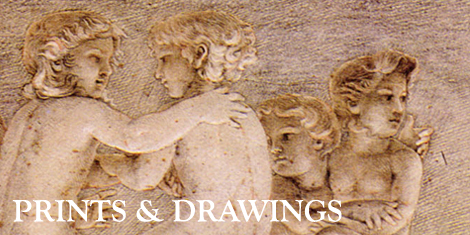
THE PROPORTION OF THE HORSE
Albrecht Dürer
Trotting Stallion, 1503
Like other leading artists of the Renaissance, Albrecht Dürer sought the way to an ideal figure composition through an intensive study of nature and an investigation of geometric proportions. Alongside the human figure, that of the horse was a particular object of his interest. He found models for example in the sculptures of Antiquity and in designs by Leonardo da Vinci for the equestrian statues of Francesco Sforza and Gian Giacomo Trivulzio.
For his Cologne study, Dürer chose the motif of the trotting horse, until then an. if anything, unusual artistic theme. The left forehoof and right hindhoof are extended forwards at the same time. In this way, the stallion develops his forward momentum from his gait. The figure of the horse is based on a clear proportional schema: using the length of the head as the unit, the drawing fits into a square grid of 16 fields, one square giving the height of the neck, and three squares the height of the torso. This also explains the conspicuous length of the animal’s body. Moreover, his hide takes on a lively plasticity through the hatching. The archetypal nature of this depiction is further emphasized by the side view and the dark background.
Dürer’s search for an ideal system of proportions and movement finally culminated in his engraving Knight, Death and Devil of 1513.
Albrecht Dürer
Nuremberg 1471–1528 Nuremberg
Trotting Stallion
1503, pen and black India ink, background opaque black, on vergé paper, 21.2 x 25.9 cm
Old holdings,
WRM Z 131



